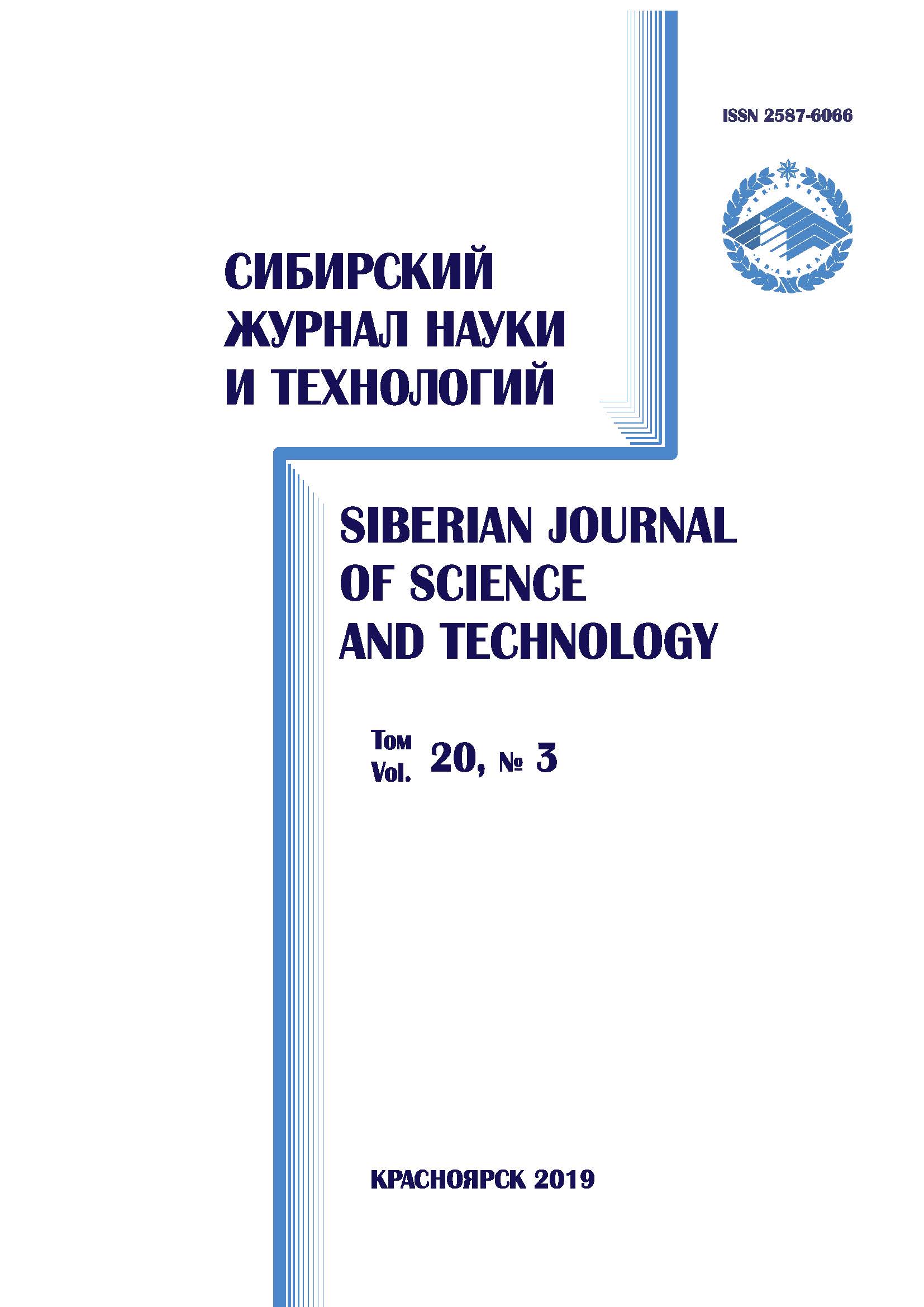The research of dependence between the input parameters of plasma spraying and microstructure of the obtained coatings
- Autores: Balashov Y.Y.1, Rudenko M.S.2, Volochaev M.N.1, Girn A.V.2
-
Afiliações:
- Kirensky Institute of Physics SB RAS
- Reshetnev Siberian State University of Science and Technology
- Edição: Volume 20, Nº 3 (2019)
- Páginas: 384-389
- Seção: Section 3. Technological Processes and Materials
- ##submission.datePublished##: 15.09.2019
- URL: https://journals.eco-vector.com/2712-8970/article/view/567858
- DOI: https://doi.org/10.31772/2587-6066-2019-20-3-384-389
- ID: 567858
Citar
Texto integral
Resumo
Today, protective coatings are applied to almost all parts and components of engineering products in order to ensure high performance properties of machines, with the lowest economic cost. The method of plasma spraying allows to apply heat-resistant coatings on a different kind of basis, in addition to a wide variety of materials. Therefore, rocket and space engineering is primarily interested in the method.
In modern conditions of high rate of mechanical engineering development engineers must develop and put into operation products within the shortest possible period of time. As a rule, engineers select the modes of plasma spraying using the method of selecting the empirical relationship between the properties of the coatings and the values of the specified parameters of plasma spraying, which suggests conducting a huge number of experiments. That is why we see the need to find new methods for selecting the plasma spraying parameters, which are based on mathematical and analytical apparatus.
We set the task to study and show the applicability and prospects of the proposed method.
In the work we carried out the operations of spraying nichrome coating, at different values of the arc current. We studied the adhesive strength of the coatings obtained and their microstructure. We showed the relationship between the arc current and the adhesion of the coatings using their microstructure. These studies have made it possible to exclude a large number of experiments, which usually establish an empirical relationship between the values of the input parameters of the deposition process and the values of the characteristics of the coatings obtained. In the future, we assume that the database of such relationships will make it possible to fully use this method in engineering industries.
Palavras-chave
Sobre autores
Yuriy Balashov
Kirensky Institute of Physics SB RAS
Autor responsável pela correspondência
Email: y.balashov@yandex.ru
Postgraduate
Rússia, 50, Academgorodok Av., Kraskoyarsk, 660036Mikhail Rudenko
Reshetnev Siberian State University of Science and Technology
Email: mister.m.rudenko@gmail.com
Engineer of the department of aircraft
Rússia, 31, Krasnoyarsky Rabochy Av., Krasnoyarsk, 660037Mikhail Volochaev
Kirensky Institute of Physics SB RAS
Email: volochaev91@mail.ru
Cand. Sc., Junior researcher at the laboratory of molecular spectroscopy
Rússia, 50, Academgorodok Av., Kraskoyarsk, 660036Aleksey Girn
Reshetnev Siberian State University of Science and Technology
Email: girn007@gmail.com
Cand. Sc., Assistant professor of the department of aircraft
Rússia, 31, Krasnoyarsky Rabochy Av., Krasnoyarsk, 660037Bibliografia
- Mikheev A. E., Kolmikov V. A. Povishenie ekspluatatsionnih harakteristik poverhnostey konstruktsiy letatelnih apparatov. Avtomatizatsiya protsesov obrabotki [Improving the performance of the surfaces of aircraft structures. Automation of processing]. Moscow, MAKS Publ., 2002, 224 p.
- Puzriyakov A. F. Teoreticheskie osnovi tekhnologii plazmennogo napileniya [Theoretical foundations of plasma spraying technology]. Moscow, Bauman’s MSTU Publ., 2008, 360 p.
- Heimann R. B. Plasma Spray Coating. 2nd edition. VCH Verlagsgesellschaft mbH, Weinheim, VCH Publishers, Inc., New York, 1996, 339 p.
- Ananthapadmanabhan P. V., Thiyagarajan T. K., Sreekumar K. P., Satpute R. U., Venkatramani N., Ramachandran K. Co-spraying of Alumina-Titania: Correlation of Coating Composition and Properties with Particle Behaviour. Plasma Jet, Surfaces & Coatings Technology. 2003, No. 168, P. 231–240.
- Lashenko G. I. Plasmennoye uprochnenie i napilenie [Plasma hardening and spraying]. Kansk, Ecotekhnologiya Publ., 2003, 64 p.
- Abramyan I. A., Andronov A. V., Titov A. I Fizicheskie osnovy elektronnoy i ionnoy tekhnologii [Physical bases of electron and ion technology]. Moscow, Vysshaya shkola Publ., 1984, 265 p.
- Barvinok V. A. Upravlenie napryazhennym sostoyaniem i svoystvo plazmennykh pokrytiy [Voltage control state and properties of plasma coatings]. Moscow, Mashinostroenie Publ., 1990, 246 p.
- Kudinov V. V. Plasmennye pokrytya [Plasma coatings]. Moscow, Nauka Publ., 1977, 270 p.
- Poliyak M. S. Tekhologiya uprochneniya. Tekhol. metodi uprochneniya [The technology of hardening. Technological methods of hardening]. Vol. 1. Mos-cow, L.V.M. – SCRIPT, Mashinostroenie Publ., 1995, 832 p.
- Kudinov V. V., Bobrov G. V. Nanesenie pokrytiy napyleniem. Teoriya, tekhnologiya i oborudovanie [Spray coating. The theory, technology and equipment]. Moscow, Metallurgiya Publ., 1992, 432 p.
- Bartuli C., Smith R. W. Comparison between Ni-Cr-40 vol% TiC Wear-Resistant Plasma Sprayed Coatings Produced from Self-Propagating High-Temperature Synthesis and Plasma Densified Powders. Journal of Thermal Spray Technology. 1996, Vol. 5, No. 3, P. 335–342.
- Krasnov A. N., Sharivker S. Yu., Zilberber V. G. Nizkotemperaturnaiya plasma v metallurgii [Low-temperature plasma in metallurgy]. Moscow, Metallurgiya Publ., 1970, 216 p.
- Rozenfeld I. L. Korroziya i zashita metallov [Сorrosion and protection of metals]. Moscow, Metallurgiya Publ., 1970, 448 p.
- Artsimovich L. A., Sagdeev R. Z. Fizika plazmy dlya fizikov [Plasma Physics for Physicists]. Moscow, Atomizdat Publ., 1979, 320 p.
- Devkin M. M., Sevastiyanov N. D. Ochistka poverhnostey detaley metallicheskim pescom [Surface cleaning of parts to metal sand]. Ed. by L. F. Liokumovich. Moscow, Mashinostroeniye Publ., 1968, 65 p.
Arquivos suplementares










